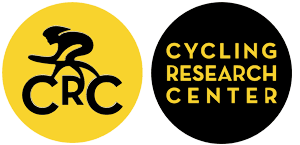Optimal Mass Scaling of Power Output for Complex Courses and its Relationship to Time-Trial Performance in Cycling
Keywords:
allometric scaling, critical power, performance prediction, performance analysis, power-duration relationshipAbstract
The allometric scaling of power output is a long-standing topic of debate in cycling research concerning performance prediction. In contrast to previously used test-based approaches, this study employed a numerical method to determine how external forces influence the conversion of power output into race velocity. Time-trial performances of typical elite-level road cyclist models were estimated utilizing the power-duration relationship and normative power data for two recent Grand Tour individual time-trial courses. Optimal body mass exponents were determined based on the estimated average speed of typical cyclists over the respective course sections, their morphological characteristics, and external factors such as incline and wind velocity. Estimated power output expressed in terms of optimally scaled power metrics - namely W/kg0.6068 and W/kg0.4891 - accurately predicted the estimated performance of five typical elite-level cyclists on two recent Grand Tour individual time-trial courses (for both). The study’s findings suggest that optimal mass exponents are course-specific and primarily influenced by the magnitude of headwind relative to the cyclist and the road gradient. Further field-based research is needed to validate the proposed method for determining these optimal mass exponents.
Downloads
References
Atkinson, G., Davison, R., Jeukendrup, A., & Passfield, L. (2003). Science and cycling: current knowledge and future directions for research. Journal of sports sciences, 21(9), 767-787.
Heil, D. P. (2005). Body size as a determinant of the 1-h cycling record at sea level and altitude. European Journal of Applied Physiology, 93, 547-554
Jobson, S. A., Woodside, J., Passfield, L., & Nevill, A. M. (2008). Allometric scaling of uphill cycling performance. International journal of sports medicine, 29(09), 753-757.
Leo, P., Spragg, J., Wakefield, J., & Swart, J. (2023). Predictors of cycling performance success: traditional approaches and a novel method to assess performance capacity in U23 road cyclists. Journal of Science and Medicine in Sport, 26(1), 52-57.
Martin, J. C., Milliken, D. L., Cobb, J. E., McFadden, K. L., & Coggan, A. R. (1998). Validation of a mathematical model for road cycling power. Journal of applied biomechanics, 14(3), 276-291.
Nevill, A. M., Jobson, S. A., Davison, R. C. R., & Jeukendrup, A. E. (2006). Optimal power-to-mass ratios when predicting flat and hill-climbing time-trial cycling. European journal of applied physiology, 97, 424-431.
Papakonstantinou, J. M., & Tapia, R. A. (2013). Origin and evolution of the secant method in one dimension. The American Mathematical Monthly, 120(6), 500-517.
Pinot, J., & Grappe, F. (2011). The record power profile to assess performance in elite cyclists. International journal of sports medicine, 32(11), 839-844.
Swain, D. P. (1994). The influence of body mass in endurance bicycling. Medicine and science in sports and exercise, 26(1), 58-63.
Valenzuela, P. L., Muriel, X., van Erp, T., Mateo-March, M., Gandia-Soriano, A., Zabala, M., ... & Pallarés, J. G. (2022). The record power profile of male professional cyclists: normative values obtained from a large database. International journal of sports physiology and performance, 17(5), 701-710.
Published
How to Cite
Issue
Section
Copyright (c) 2025 Journal of Science and Cycling

This work is licensed under a Creative Commons Attribution-NonCommercial-NoDerivatives 4.0 International License.
Authors contributing to Journal of Science and Cycling agree to publish their articles under a Creative Commons CC BY-NC-ND license, allowing third parties to copy and redistribute the material in any medium or format, and to remix, transform, and build upon the material, for any purpose, even commercially, under the condition that appropriate credit is given, that a link to the license is provided, and that you indicate if changes were made. You may do so in any reasonable manner, but not in any way that suggests the licensor endorses you or your use.
Authors retain copyright of their work, with first publication rights granted to Cycling Research Center.






